This is the classic recipe for pasta frolla or Italian sweet shortcrust pastry dough. Use this recipe to make tarts, pies, crostata and cookies!
Pasta frolla is a versatile sweet shortcrust pastry used to prepare many traditional Italian desserts (such as crostata, cookies, pies, fruit tarts, Easter Neapolitan pastiera and many more).
There are tons of sweet tart dough recipes out there, but pasta frolla is by far my favorite, and once you give it a try, I’m sure you’ll love it too.
It's absolutely fail-proof and incredibly easy to prepare even by novice bakers!
Like British shortcrust pastry or French Pâte sucrée, the basic ingredients include flour and butter, sugar and egg.
However, the pasta frolla recipe calls for different quantities and includes aromatics, which add a vibrant and refreshing flavor.

Below you can find it in its basic version, but this pastry dough can be flavored with vanilla, lemon zest, cinnamon, and other spices.
It’s not too sweet, and not too buttery, it’s delicate and crumbly but not too much, it has just the perfect balance!
Jump to:
Pasta frolla ingredients
This recipe for pasta frolla includes basic cupboard ingredients: flour, sugar, butter, eggs, and aromatics of your choice.
Below you can find my ingredient recommendations:
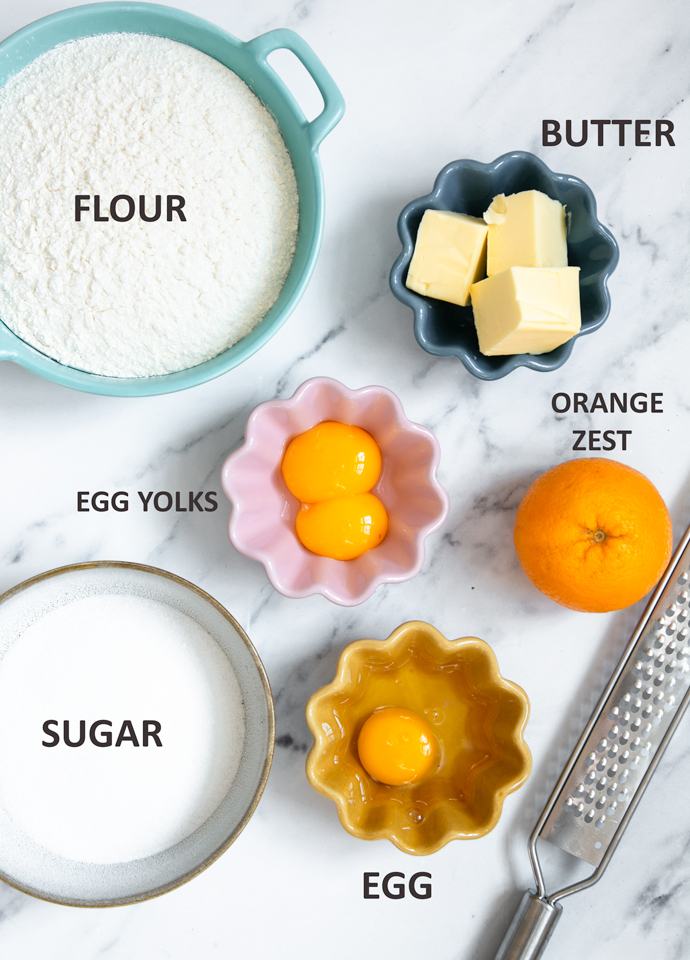
- Flour: Go for the basic all-purpose flour or Italian 00 flour. You can also mix 50% plain flour and 50% wholewheat flour or rice flour.
- Butter: Use high-quality butter for best results, I like to use slightly salted Irish or French butter. Alternatively, you can use olive oil to make a dairy-free sweet shortcrust pastry.
- Eggs: I use two yolks and a whole egg when making this dough. The yolks give friability, and the egg white makes the dough more compact. You can also use just yolks for a more crumbly result (great for cookies!).
- Sugar: Use your favorite sugar. For a more rustic vibe, go for organic brown sugar, demerara sugar or muscovado.
- Aromatics: Classic pastra frolla calls for orange or lemon zest, or fresh vanilla scraped from the bean pod.
INGREDIENT TIPS
For a flavored pastry dough, you can substitute 30 g/1 oz of plain flour with a nut flour (ground nuts) of your choice (almond flour, walnut flour, hazelnut flour or pistachio flour) or with cocoa powder.
Some recipes call for baking powder and entire eggs. If you want to follow the traditional recipe, I don’t recommend any of them.
However, it's totally ok if you want to add ½ teaspoon of baking powder to make the base for a pie or crust, as it gives a softer result.
How to make pasta frolla
There are two methods to make pasta frolla, the classic method, and the sanding method. Both give impeccable results.
The classic method requires an electric whisker or stand mixer, the sanding method can be easily done by hand.
CLASSIC METHOD
This is my favorite method and the one I use most of the time.
You can use it to make any fruit tart and pie base or to make crostata, and of course, cookies. It is easy to work with and more compact.

STEP 1. Place the butter, sugar and aromatics in a stand mixer, and whip them until creamy and foamy.
STEP 2. Then add the eggs one at a time, until fully incorporated. Continue to mix until you reach a creamy texture.
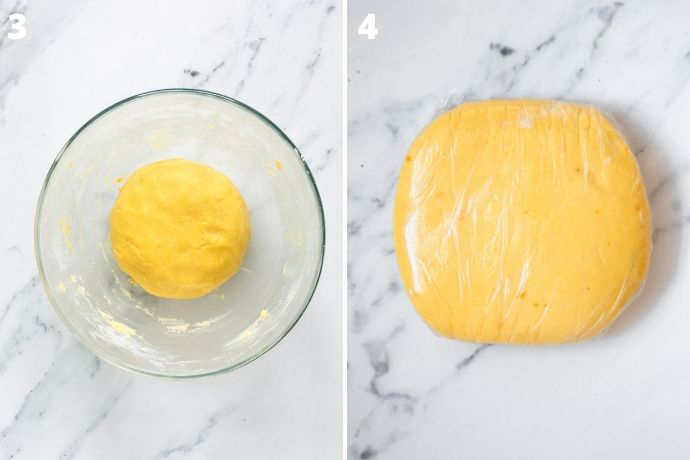
STEP 3. Add in all the flour, and then mix everything. The dough is still sticky, dust it with flour and form the dough into a ball without overworking it.
STEP 4. Flatten the dough into a disk and wrap it in cling film. Let it rest in the refrigerator for at least 1 hour, then proceed by making tarts, pies or cookies.
SANDING METHOD
This method will give you a shortcrust pastry that is not compact but, in fact, sandy. It will result in a delicate and friable dough after you bake it.
If you want to make crunchy cookies, this is the best method.
- Make a classic fountain with the flour on a working surface.
- Add cold cubed butter in the center, and mix it with the flour with your fingertips.
- Then add the sugar, followed by the eggs and aromatics.
- Knead until you get a homogeneous and non-sticky dough ball.
- Flatten the ball into a disk, wrap it with cling film and let it rest in the refrigerator for at least 1 hour.
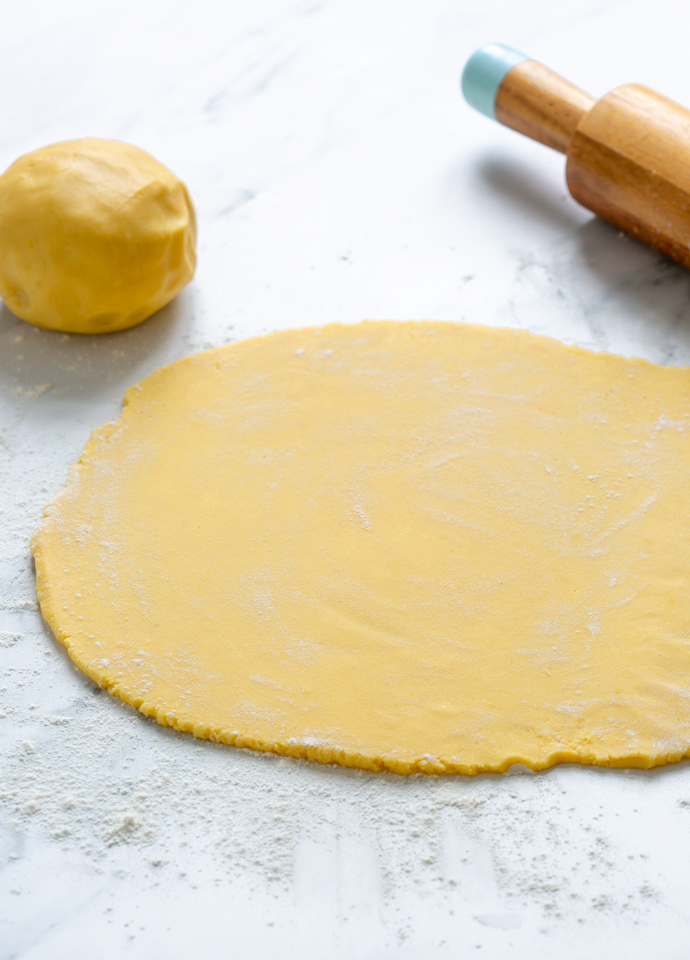
Regardless of the method you use, once the dough has been rested for enough time, take it out from the refrigerator.
Lightly dust with flour on a working surface and the rolling pin, then roll the dough quickly (the more you work the dough, the stickier it becomes), and proceed by making the tart, pie or cookies of your choice.
How to bake pasta frolla
The baking time depends on what you want to make.
You can bake the pasta frolla as a base for a tart or pie in a static oven at 180 °C/ 360° F, with the fan option on at 160 °C/ 320 °F.
Classic Italian crostata (jam tart), tarts and pies take about 30 to 45 minutes.
Cookies, biscuits and tartelettes take about 12-15 minutes.
Baking tips
- If you use the sandy method, make sure your butter is cold. If your kitchen is warm, transfer the cubed butter to the freezer for 10 minutes to chill.
- The less you work the dough with your hands the better, because their warmth will make the butter soften faster.
- If the pastry is too crumbly, you have overworked the dough. Add a teaspoon of cold water, mix everything quickly, if necessary, with a pinch of flour and immediately place in the fridge!
- Dust your counter and your rolling pin lightly with flour before rolling the dough.
- Alternatively, place the dough between two sheets of baking paper, so it won’t stick to the counter or rolling pin.

Storage tips
- Refrigerator: You can store pastry dough well wrapped in cling film in the refrigerator for up to 2 days.
- Freezer: You can freeze sweet pastry dough! Wrap it in cling film, then place in a freezer-friendly bag or container and store it in the freezer for up to 30 days.
Recipe FAQs
Absolutely yes. Flatten the dough into a disk and wrap it in cling film then store it in the fridge. You can also roll it into a pie or tart pan and store it in the refrigerator for up to 2 days.
I usually avoid filling the tart more than 2-3 hours in advance, as the base would become a bit soggy, especially if you use fruit and cream fillings.
If you use this pastry dough recipe to make a tart base, and you use watery fillings such as chopped fruit, you should first blind-bake the pastry base.
To blind bake top the base of the pastry with parchment paper, followed by baking beads or dried beans to weigh the crust down, and bake for about 10-15 minutes.
Yes, follow the classic method above and use the electric hand mixer instead of a stand mixer. After you add the flour, bring the dough together using a spatula.
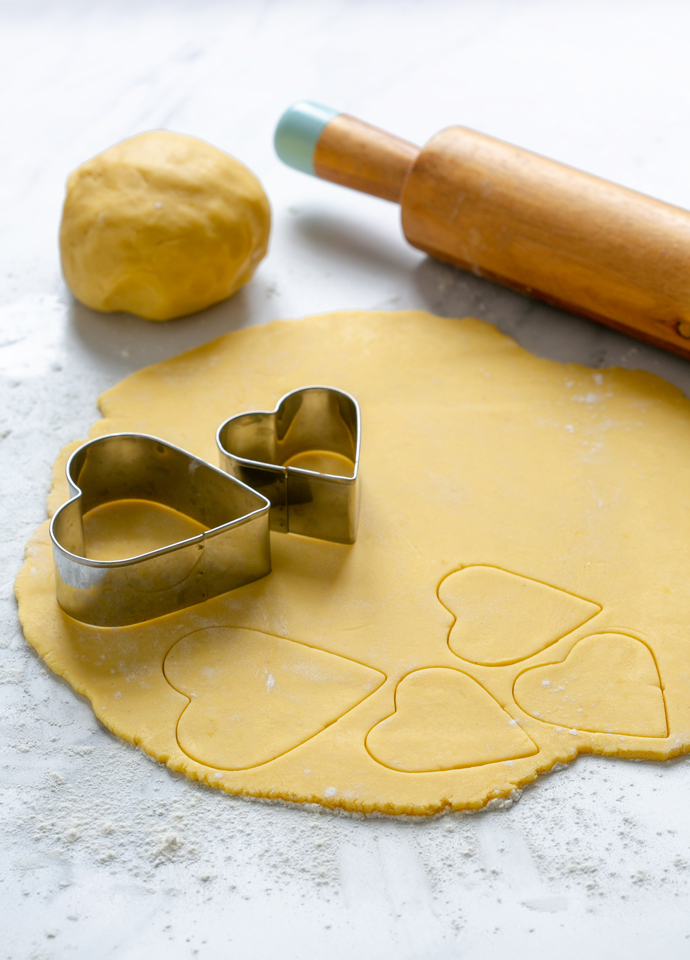
More Italian desserts to try
- Water Cake: A Dairy-free, Egg-free, Magic Cake
- Classic Tiramisu Without Eggs - Authentic Italian Recipe
- Rustic Italian Apple Cake {dairy-free, with olive oil}
- Best Italian Hot Chocolate
Did you try this recipe?
Please let me know how you liked it! Leave a comment below and share a picture on Instagram with the hashtag #thepetitecook!
Don't forget to subscribe to my newsletter and follow along on Facebook, Pinterest and Instagram for the latest updates.
Recipe
Pasta Frolla - Sweet Shortcrust Pastry
Ingredients
- 170 g butter
- 120 g sugar
- zest of 1 organic orange, (or lemon zest)
- 2 egg yolks, medium
- 1 egg, medium
- 330 g all purpose flour , + 1 tbsp
Instructions
- Place the butter, sugar and orange zest in a stand mixer, and using the whisk attachment whip them until creamy and lightly foamy, for about 3-4 minutes.
- Add one egg yolk at a time, until each is fully incorporated, followed by the whole egg. Continue to mix until you reach a creamy texture, for about 2 minutes.
- Add in all the flour, and then mix everything with the hook attachment or by hand with a spatula.
- The dough will still be sticky at this point, dust it with 1 tablespoon of flour and form the dough into a ball without over-working it.
- Transfer the ball onto a sheet of cling film, flatten it into a disk and wrap it well. Let the dough rest in the refrigerator for at least 1 hour.
- Once ready, transfer the dough on a clean and lightly floured working surface. Dust the rolling pin lightly will flour and roll the dough to form a large disk.
- Use the disk to line a tart or baking pan, or cut it with a cookie cutter for cookies.
Video
Notes
- The less you work the dough with your hands the better, because their warmth will make the butter soften faster.
- If the pastry is too crumbly, it means you have overworked the dough. Add a teaspoon of cold water, mix everything quickly, if necessary, with a pinch of flour and immediately place in the fridge!
- Dust your counter and your rolling pin lightly with flour before rolling the dough.
- Alternatively, place the dough between two sheets of baking paper, so it won’t stick to the counter or rolling pin.
Nutrition
The information shown is an estimate provided by an online nutrition calculator. It should not be considered a substitute for a professional nutritionist’s advice.


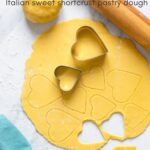

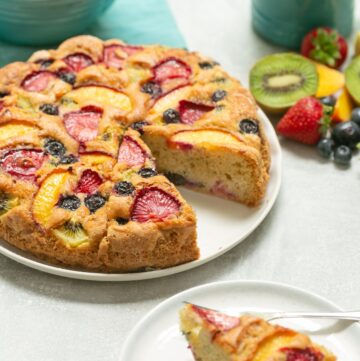

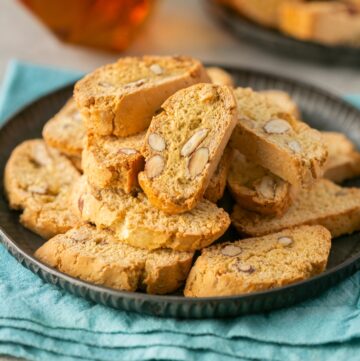

Toni says
Thank you so much, I made this today and it was delish. I made a Crostata with my dough and used homemade apricot jam from my mom! I learned to make this as a kid after our Italian neighbor taught my mom. Somewhere she lost the recipe so i was happy to find yours. We always used the well method to mix it with our hands right on the kitchen counter but I followed your method. It was lovely but I might try mixing it with the well method the next time for a crumblier crust. Just to 'experiment' 😆 😋
Dorine says
Thank you for these recipes. I had a recipe for pasta frolla from my mother which sadly had been lost, in a move. Have a question though, her recipe used Pane did Angeli. Did you ever use that in these recipes?
Andrea says
Hi Dorine, you're absolutely welcome and I hope you give this pasta frolla recipe a try soon! As for Pane Angeli, this is an Italian brand for most common baking ingredients (baking powder, baking soda etc), I use it when I'm in Italy, but it's not easy to find abroad, and you can definitely substitute it with other brands.